#Judith and her maidservant with the head of Holofernes
Text
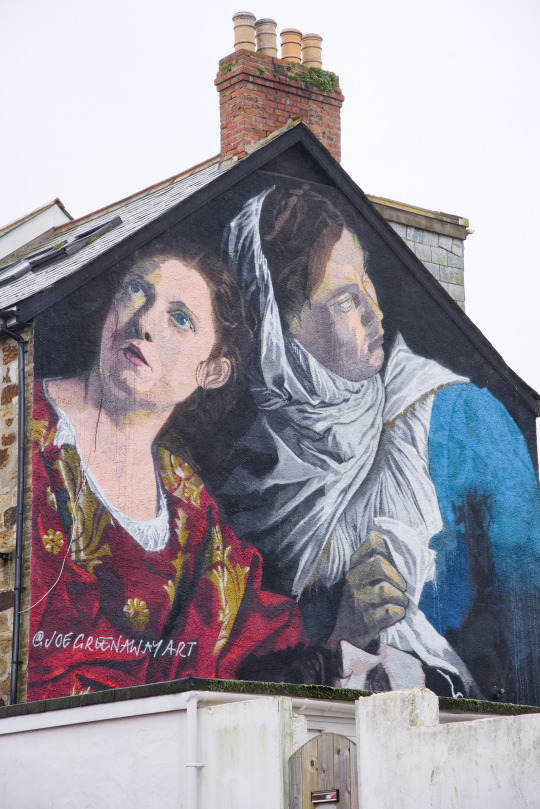
Day 2091, 14 March 2024
#Cornwall#Newquay#mural#street art#joe greenaway#Judith and her maidservant with the head of Holofernes#art#terraced house#kernow#England#UK
7 notes
·
View notes
Text

4 notes
·
View notes
Text

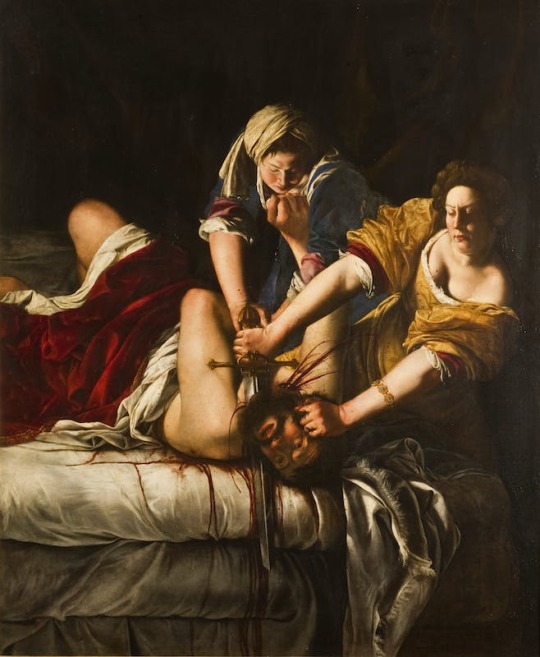
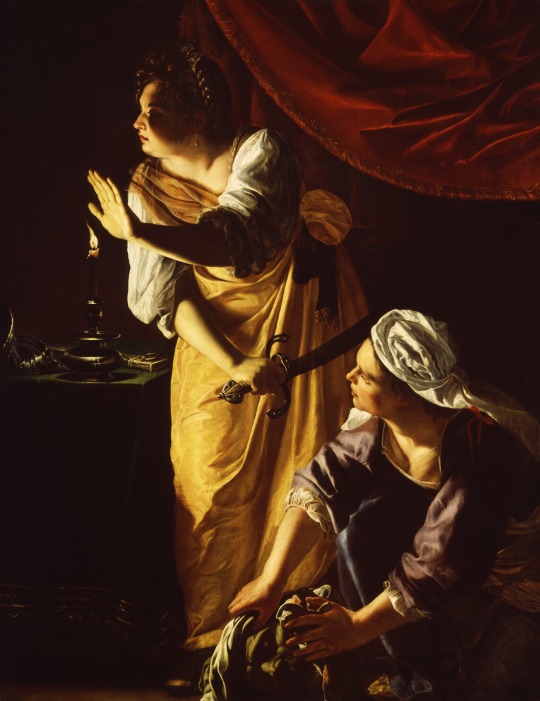





Artemisia Gentileschi Appreciation Post
All Paintings & Quotes by Artemisia Gentileschi
Painting names from left to right:
Judith and Holofernes
Judith and Her Maidservant with the Head of Holofernes
Jael and Sisera
Lot and His Daughters
The Annunciation
Danaë
#chaotic academia#dark academia#art#classic academia#light academia#illustration#classic art#books & libraries#oil painting#oil on canvas#words#spilled ink#dark academia books#dark academia aesthetic#academia art#art academia#artwork#dark academia art
166 notes
·
View notes
Text
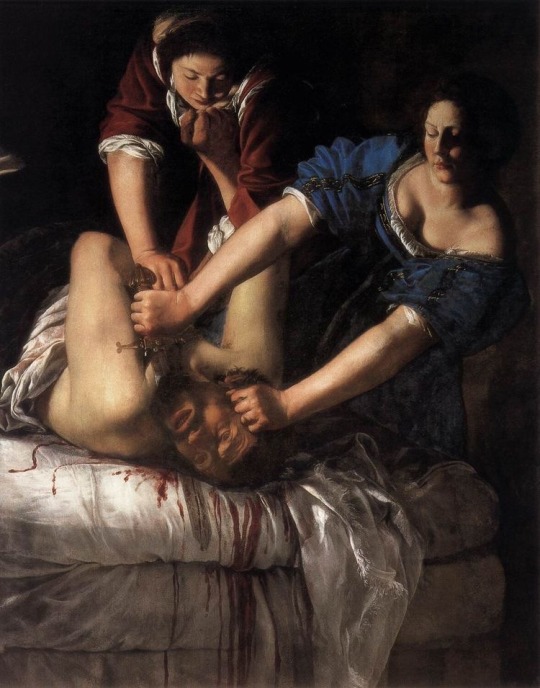




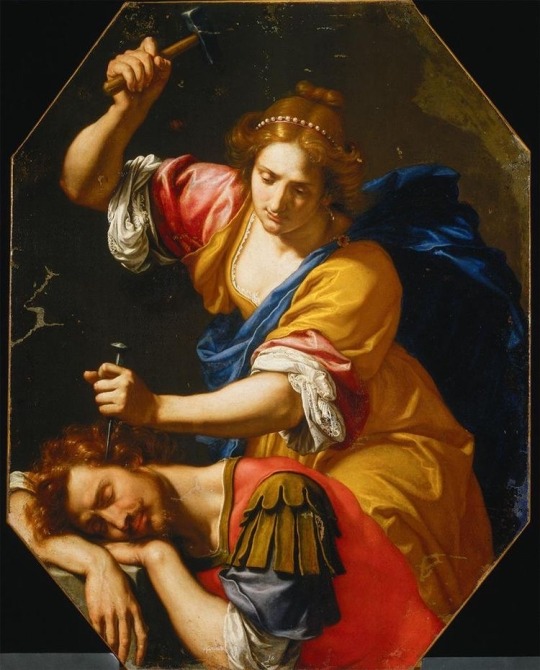
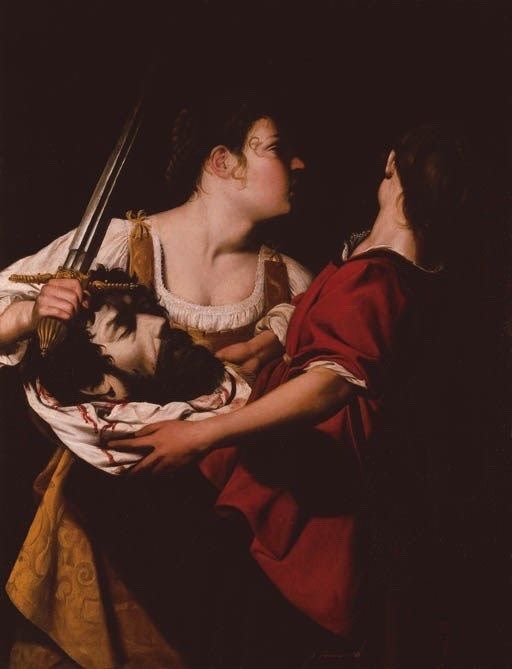

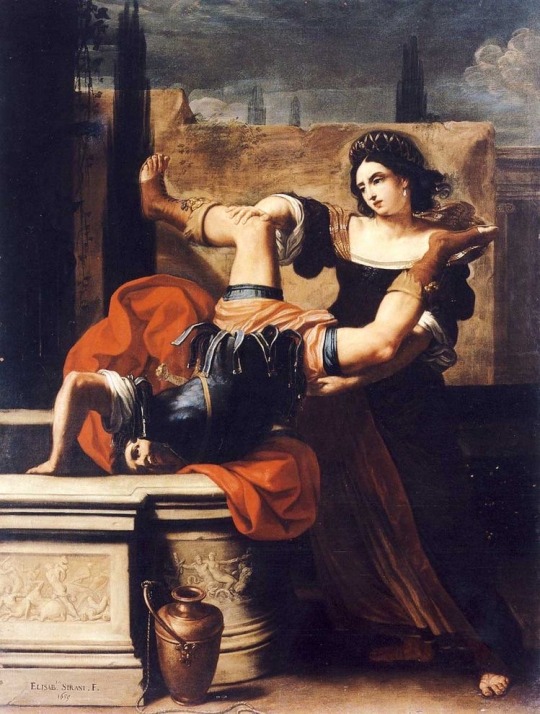

Feminine rage in paintings
Judith Slaying Holofernes by Artemisia Gentileschi | Salome with the Head of Saint John the Baptist by Caravaggio | Judith Beheading Holofernes by Caravaggio | Jael and Sisera by Alessandro Turchi | Judith with the Head of Holofernes by Louis Finson | Jael slays Sisera by Ottavio Vannini | Judith and Her Maidservant with the Head of Holofernes by Orazio Gentileschi | La Douce Résistance by Michel Garnier | Timoclea Kills the Captain of Alexander the Great by Elisabetti Sirani | Salome Bearing the Head of Saint John the Baptist by un unknown copyist after c. 1631 originated from Guido Reni
#painting#baroque#baroque painting#art#literature#oil painting#renaissance#renaissance painting#vintage#dark academia#aesthetic#dark academic aesthetic#goth#gothic#historical#vintage art#whimsical#vintage painting#period#girl night
119 notes
·
View notes
Text
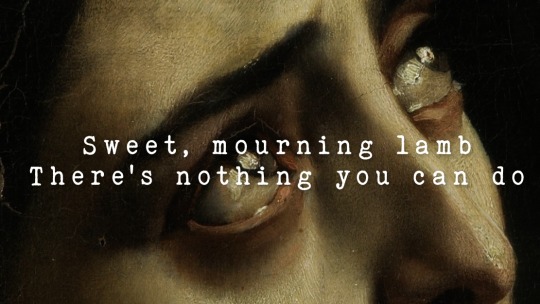

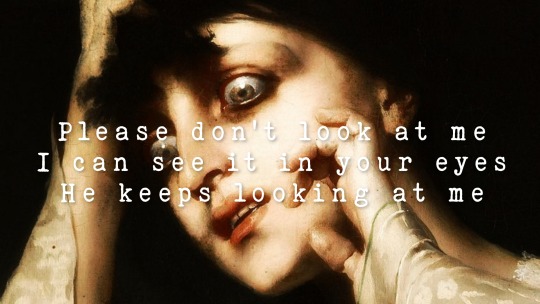



Ptolemaea ~ Ethel Cain + The Last Day of Pompeii ~ Karl Bryullov // Judith and her Maidservant with the Head of Holofernes ~ Orazio Gentileschi // Ordeal of the Bier ~ Jenö Gyárfás // Stańczyk ~ Jan Matejko // The Two Princes Edward and Richard in the Tower ~ Sir John Everett Millais // The Irritating Gentleman ~ Berthold Woltze
#ethel cain#ptolemaea#music#art#preacher's daughter#lyrics#hayden anhedönia#mothercain#typography#paintings
194 notes
·
View notes
Text

Orazio Gentileschi, Judith and her Maidservant with the Head of Holofernes, ca. 1610-1612, oil/canvas (Wadsworth Atheneum, Hartford)
25 notes
·
View notes
Text

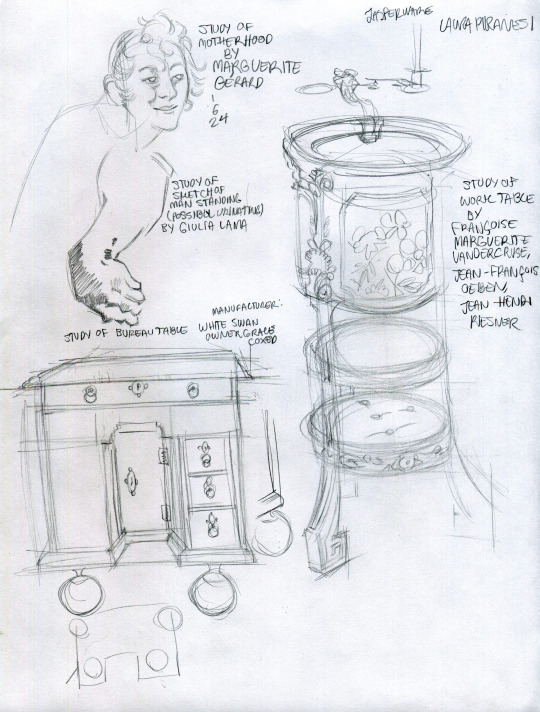
Went to the BMA (of which I am a member 💅) and did some sketches of their Making Her Mark exhibit of woman artists from 1300-1800. Really fabulous stuff! Seeing Artemisia Gentileschi in personal especially was an incredible experience. If you haven't seen her Judith and her Maidservant with the Head of Holofernes, boy howdy is it amazing. The most modern use of shadows I've ever seen from 1623
2 notes
·
View notes
Text
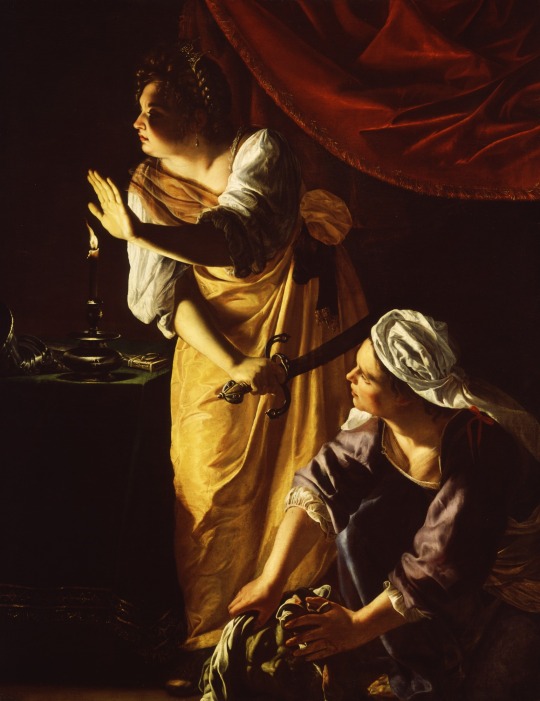
Judith and Her Maidservant by Artemisia Gentileschi
This has been one of my favorite paintings since I saw it in the Detroit Institute of Arts when I was a little girl. I became fascinated with the story because of it. Every time I went to the DIA, I made a beeline for it. One thing I love about the composition is that Holofernes? Yeah whatever the maidservant (Abra) has got to deal with his head but he is so completely dead, who cares about him? This is about Judith and Abra. And Judith stands ready to protect both of them with her sword, which she is not shy about holding.
The lighting is what drew me to the painting at first, but it is a truly great painting in every way.
5 notes
·
View notes
Text



The story of Judith Beheading Holofernes by Artemisia Gentileschi
Judith Beheads Holofernes-1620
Judith and her Maidservant-1618-1619
Judith and her Maidservant with the head of Holofernes-1623-1625
20 notes
·
View notes
Text
Judith and her Maidservant, Artemisia Gentileschi, 1613.
This work portrays Judith after having killed the general of the enemy army, Holofernes, carrying his severed head inside a basket.
↳ “The Lord has struck him down by the hand of a woman.” She says in the Bible as she describes her act, which freed the people of Israel from the siege by Nebuchadnezzar's army. Judith went to Holofernes' encampment, pretending to want to forge an alliance. He was hypnotized by her beauty, and invited her to a banquet in his tent. After eating and drinking, Holofernes, now drunk, fell asleep, which allowed Judith to cut his head off.
This painting also pictures Artemisia's talent and strength, as she chose to be an artist in an era completely dominated by men, being the first woman to ever join Florence's art academy.
Happy women's day!

5 notes
·
View notes
Text
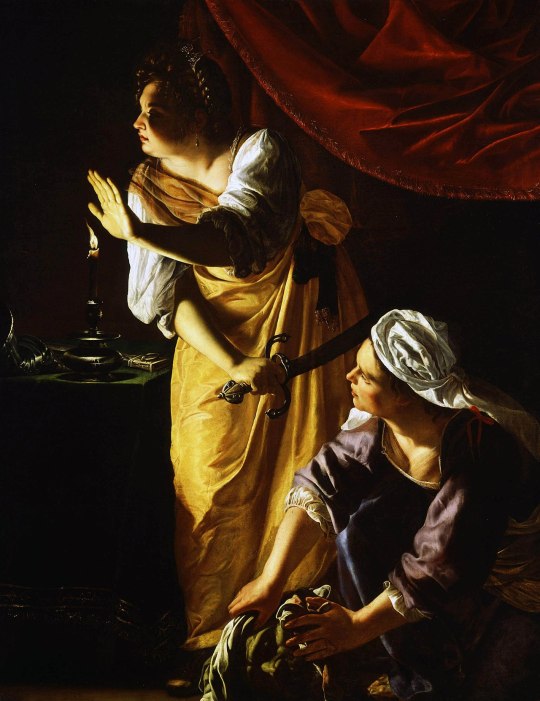
Artist Artemisia Gentileschi
Judith and Maidservant with Head of Holofernes (between circa 1623 & 1625)
oil on canvas
184 cm x 141.6 cm (72.4 in x 55.7 in)
https://palianshow.wordpress.com/2022/04/18/artemisia-gentileschi-italy-1593-1656/
In an era when women had few opportunities to pursue artistic training or work as professional artists, Gentileschi was the first woman to become a member of the Accademia di Arte del Disegno in Florence and she had an international clientele.
Many of Gentileschi's paintings feature women from myths, allegories, and the Bible, including victims, suicides, and warriors.
Some of her best known subjects are Susanna and the Elders (particularly the 1610 version in Pommersfelden), Judith Slaying Holofernes (her 1614–1620 version is in the Uffizi gallery), and Judith and Her Maidservant (her version of 1625 is in the Detroit Institute of Arts).
Artemisia Lomi or Artemisia Gentileschi (US: /ˌdʒɛntiˈlɛski/, Italian: [arteˈmiːzja dʒentiˈleski]; 8 July 1593 – c. 1656) was an Italian Baroque painter. Gentileschi is considered among the most accomplished seventeenth-century artists, initially working in the style of Caravaggio. She was producing professional work by the age of fifteen.
about the artwork: Judith and her servant pause, seeming to hear a noise outside Holofernes’ tent. The shadowy interior is theatrically illuminated by a single candle. Judith’s hand shields her face from the glow, drawing attention to Holofernes’ discarded iron gauntlet. The viewer’s eye travels to the object in the maidservant’s hands: Holofernes’ severed head.
source: Wikipedia
3 notes
·
View notes
Text
Grievances of a Painted Lady
Based on the painting Judith Beheading Holofernes, Caravaggio, Michelangelo Merisi
Oh Caravaggio, exalted painter,
Why must you paint me so?
Have you not read the scriptures;
What I did when our governors failed my people?
Have you not heard of my strength;
How I took off his head in two blows?
So why Caravaggio,
Do you paint my grip so weak?
I did not stand so separate that night.
It was no passive act, when I drank with Holofernes
Drugging him with my beauty and charm.
But still, you draw me at arm's length.
And my poor maidservant, you show a hag over my shoulder
Wrinkled and twisted, eyes widened with evil intent.
As though she was pushing me into this crime,
As though it wasn’t always my plan to save Jerusalem.
Look at the splash of his blood, Caravaggio, I feel it
sticky on my hands, like honey sweet wine.
Imagine how his hair felt, bloodied artist,
Curled in my hands, the only support his head had.
Do you know the taste of bloodlust? when i went
Unto our leaders, I begged of why they tempt God,
To work within our human limits, and told them I
Would be God’s vengeance unto the enemies of Jerusalem.
I tasted the blood then, heavy and metallic
In my mouth. I taste it again now, but it is sweet.
For what they had asked of God in five days, he has done through me
In four. Will you call that innocence Caravaggio?
You must admit, if you had truly read of me, then you would know
How Judith, widow of Manasses, threw off the widow’s garments,
Tied up her hair, and by the grace of the Almighty
Disappointed the enemy with a woman’s hand.
Oh, painter, how you disgrace me. Jerusalem praised me
As blessed by God for my bravery and yet you show me weak,
Countenance twisted and brow furrowed with uncertainty.
Why could I not have been painted by Artemesia?
#poetry#original poem#sometimes to express your deep hatred for the portrayal of a character you have to write a poem from their perspective berating their artis#anyway if you've ever had to read the book of Judith#1 im so sorry there are no good modern sounding translations#2 judith is actually pretty badass#honestly one of my favorite poems ive written
0 notes
Text
Judith and the Head of Holofernes: The Power of Female Heroism in Art
Among the plethora of Biblical stories that have been transformed into artistic masterpieces, the tale of Judith and Holofernes holds a unique place. This dramatic narrative has been brought to life by numerous artists throughout history, each offering their own interpretation. Yet, the central theme remains: the triumph of a courageous woman over a tyrant.
The story, as told in the Book of Judith in the Old Testament, is one of heroism and cunning. Judith, a beautiful Jewish widow, infiltrates the camp of the Assyrian general Holofernes, who has been laying siege to her city, Bethulia. Through her charm and beauty, Judith gains the trust of Holofernes, and once he is drunk and unconscious, she beheads him with his own sword.
Two of the most famous depictions of this scene come from Italian Baroque painter Artemisia Gentileschi and Italian Renaissance artist Caravaggio. Each offers a unique perspective on the narrative and the character of Judith.
In Caravaggio's 1599 version, "Judith Beheading Holofernes," the scene is depicted at its most dramatic moment: the act of beheading. Caravaggio's Judith is portrayed as a delicate, somewhat hesitant figure, her face scrunched in a mix of determination and disgust. This depiction emphasizes the shocking and gruesome nature of the act itself, showcasing Caravaggio's skill in dramatic lighting and realism.
In stark contrast, Artemisia Gentileschi’s 1620 version of "Judith Slaying Holofernes" portrays Judith as a figure of strength and determination. Her Judith is resolute, her face set in stern concentration as she and her maidservant hold down a struggling Holofernes. Gentileschi's personal history of surviving sexual violence has led many art historians to interpret her depiction as a form of catharsis and a testament to female power and resilience.
Regardless of their different interpretations, both works highlight Judith's courage and the drastic measures she was willing to take to save her people. The story of Judith, and its depiction in these artworks, challenges traditional gender roles and power dynamics, offering a narrative where a woman, not a man, is the hero.
Moreover, the tale of Judith and Holofernes resonates beyond its Biblical origins. It serves as a timeless symbol of resistance against oppression, embodied in the figure of a woman willing to risk everything for the sake of her people.
In our modern context, these portrayals of Judith continue to inspire and provoke thought. They force us to confront societal notions of power, gender, and heroism, encouraging a dialogue that extends beyond the canvas. As we contemplate these masterpieces, we are reminded of the transformative power of art and its ability to question, communicate, and challenge our understanding of the world and its narratives.
0 notes
Text
Judith with the Head of Holofernes

Judith with the Head of Holofernes was painted in 1596 by Fede Galizia. The painting is oil on canvas and measures 120 cm by 94 cm. Currently this paining is on display at The Ringling Museum. The color choices and use of contrast seem to bring a sense of peace to the painting opposed to horror. The red drape would suggest war, sin, and blood whereas the blue of the Widow’s dress would suggest trust, loyalty, and security. Since the Widow is in front of the drape the emphasis of color focuses more on her. The widow is also slightly larger than the maidservant which suggests that she is more of an important figure in the painting. For size reference the head of Holofernes is scaled larger to also show emphasis on him. The Widow appears to have a look of excitement and contentment on her face, and the maidservant seems to be gazing at her with awe.
The image portrays a scene from the book of Judith and displays a Jewish Widow after she and her servant decapitated the General who wished to destroy her people. During the Renaissance it was not very common for a woman to be commissioned to paint narratives or portraits, it was also uncommon for men like Galizia’s father to teach women the skills to paint. I love that this painting depicts a women’s strength, determination, and courage to stand up to a man at a time when women were less powerful, her signature on the sword that killed Holofernes makes the painting even more triumphant, a rebirth of the image of a woman.
This work of art is important to society and the world in general because it contrasts the image of women being weak as well as inferior to men and highlights their ability to be strong and ruthless as well. I also think that this painting is proof to stand up for your family and your community and not just accept ill things that are occurring.
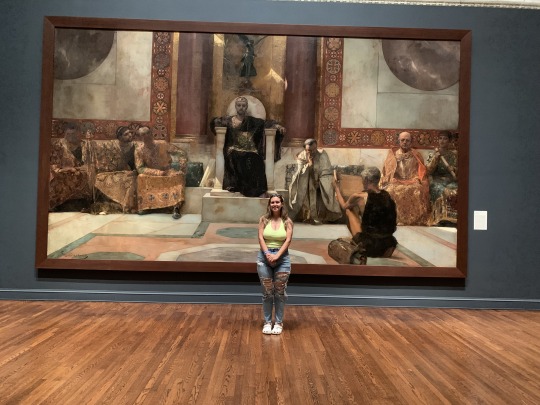

Here are some images of my visit at The Ringling Museum, to the left I am standing in front of Emperor Justinian an oil on canvas painting that I love for its details and massive size, and to the right I'm outside of the Ca'd'zan on the deck made of different stone which is just breathtakingly beautiful.
0 notes
Text


The beautiful piece that I chose to view and research is named: Judith with the Head of Holofernes. This piece was created by Fede Galizia. She was inspired by Renaissance artwork. There are multiple pieces by other artists that are made with similar intentions to this one. In terms of physical qualities, we can go into many varieties. This piece is made using oil on canvas. The dimensions are 47 1/2 × 37 in. (120.7 × 94 cm). I want to go into further detail about Judith because she looks gorgeous. There are vibrant colors of blood red curtains behind her, her pale skin tone, and metallic dark blues for her gown. Judith is the main subject of the piece. Although she is the main subject, she appears to be holding the severed head of a man named Holofernes, and it is placed in a bowl. The colors of the man’s head are muted, dark, and moody. There is also a maidservant on the right side of the piece in the shadows. She appears to be observing and supporting Judith, and her hand is placed on her face as if she is thinking intensely. This piece is relatively balanced. The vibrant side on the left contrasts the darker more moody right side. Judith’s clothing and accessories show unity and symmetry with her intricate beading, jewelry, and patterns. Judith holds a sword in her right hand, and the head in her left.
This piece by Fede makes me feel powerful and beautiful. Judith in this painting is holding a man’s head, and sometimes I feel like men try to control everything in a relationship. When I look at this painting, it makes me think that my beauty is just one of many reasons I am powerful. I do not have to behead someone to feel powerful, but Judith looks very confident and bejeweled.
After doing further research on this piece, I found a powerful moment to be displayed for the viewer. The story is a biblical piece, and it is said that Holofernes wished to end the lives of the Jews in the land of Bethulia. He became infatuated with Judith the widow of a Jewish husband. With the help of her maidservant, she decapitated Holofernes with his own sword. She was a heroine to her people. It is rumored that men made a moral warning stating that men should be careful to not lose their heads over a woman. That is a figurative message about love.
I believe that this piece of art is important because of its Renaissance inspiration, its vibrant hues, and intricate details. I believe this piece is important for its storytelling as a visual. I picked this piece because it felt and looked different than the others that I was seeing.
(Citations are on submitted document)
0 notes
Text
John Ringling Virtual Sketchbook 3
Artist Fede Galizia has Judith serving both looks and heads in her depiction of the story of Judith and General Holofernes from the Book of Judith. Titled Judith with the Head of Holofernes, Galizia painted this still life as her first religious work. The final piece was completed in 1596 and was 47.5 inches by 37 inches. The medium used to create such masterpiece was simply oil paint on canvas. Galizia has painted this religious tale many times, each slightly different than the last. As have many other artists, though. I chose to write specifically on the one Fede Galizia created because she was the only female artist I saw. I noticed hers had many more fine details than the male artists, including individual brush strokes on each strand of fabric on the subject’s clothing. I really liked how Galizia captured the story differently than the men.
Judith with the Head of Holofernes shows Judith holding Holofernes’ head by gripping his hair in a basin. In her hand, she holds the sword used for the decapitation. You can clearly see that Judith is dressed very nicely, which is an important detail to this story. The people of Bethulia were very unhappy with this Assyrian General Holofernes, as he was targeting Jews. The city was attacked by him, including Judith’s home. Determined to liberate the people of Bethulia, Judith planned to get back at the general. She was able to seduce Holofernes and was invited to his home for dinner. With her Maidservant’s help, Judith sneakily sliced Holofernes’ head clean off. The painting itself is very dark. There are many browns and dark reds shown in both the background and foreground. In the foreground, you can see Judith with the head and her maidservant. Judith is positioned in front of the maidservant to show emphasis and to dramatize her actions. The background shows red curtains. It creates the sense of royalty, which makes sense because Holofernes was the general to King Nebuchadnezzar. There is not much contrast to this work. It is dark and dreary throughout.
The story of Judith has been associated with the renaissance and baroque time periods by artists. Art during these periods were centered around portraits, classical religion, and contemporary life events. I think Fede Galizia was trying to convery her own unique depiction of this biblical scene. In many other works of this same story, the scene is far gorier. Galizia includes some blood to show to realism of this story, but it is not nearly as detailed as the male artists. I believe Fede focuses more on the emotions of Judith rather than the tragedy of the story. In her work, Judith looks very proud. She knows she liberated her people and saved the Jews. In other paintings, Judith looks ashamed, scared, and sorrow. I think it is very interesting to see how to different male and female artists create the same stories so differently.
The importance of this work by Fede Galizia shines in many ways. My favorite example is how this empowers women. As mentioned before, Galizia painted this scene in a less gruesome way. This was intended to show the pride and confidence of Judith. Blood and gore do not always represent that, unlike what a male artist of the time would think. As another way to show female grandeur, Fede signed her name on the sword used to kill Holofernes, which I believe shows how she relates to Judith. These examples of courage and dignity are just a few of the reasons I picked this painting. I feel like this painting called my name in the museum. I saw it online too, but it did not compare to how I felt when I saw the work in person. I am very glad I got the opportunity to experience one-of-a-kind art in person.

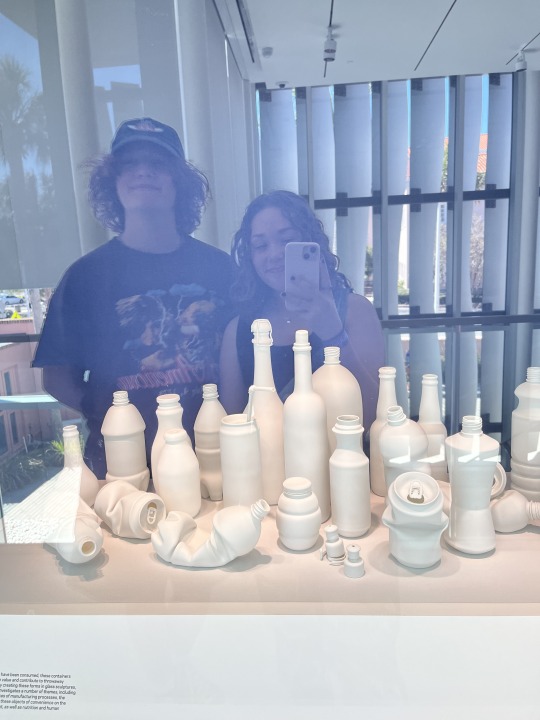

0 notes